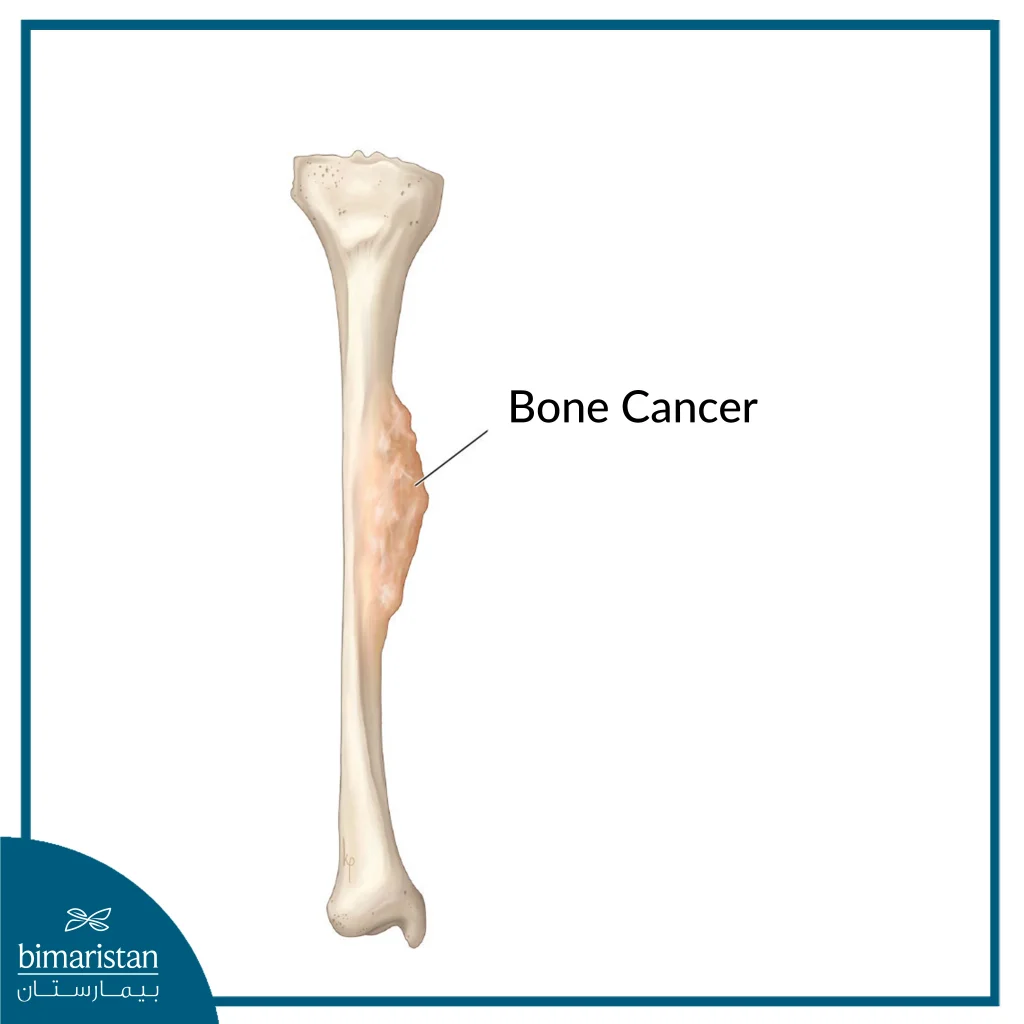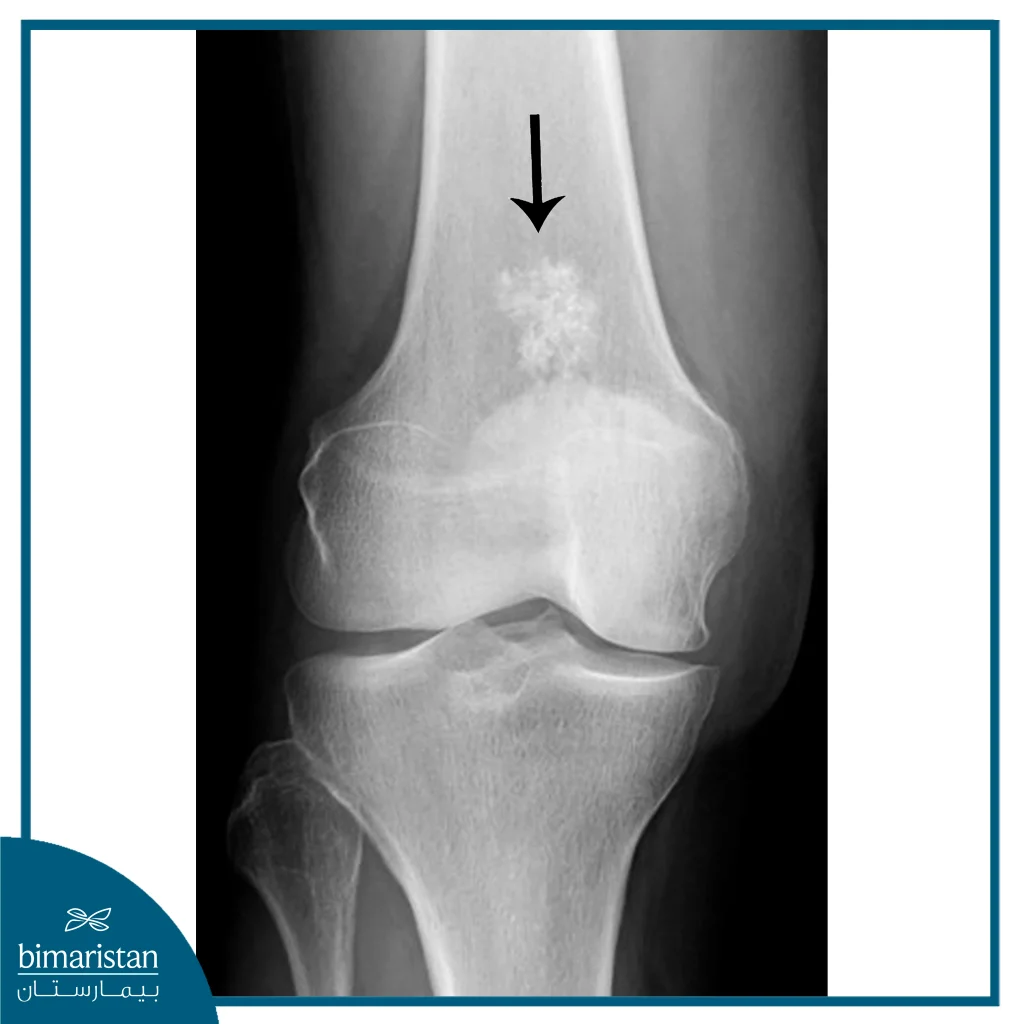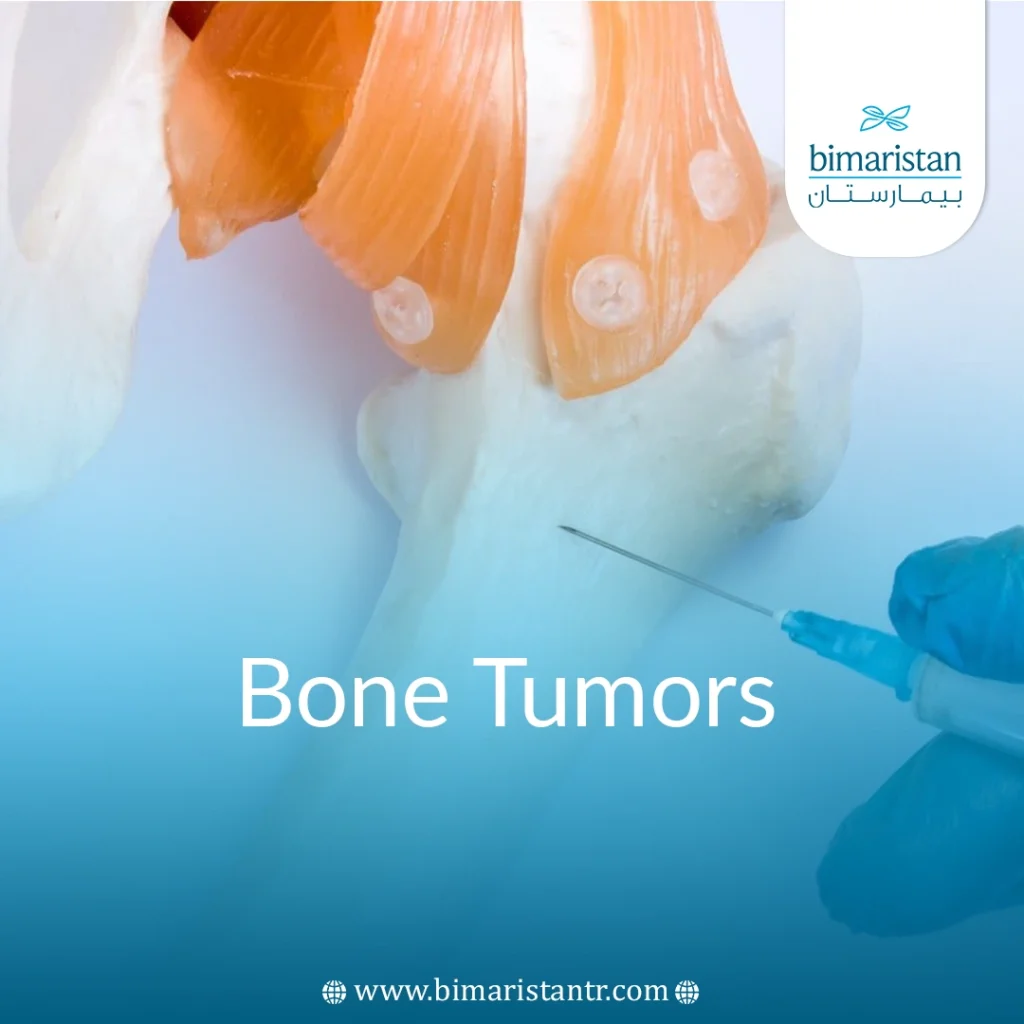Bone cancer results from the malignant proliferation of bone cells and is classified into various types. Over the past decade, Turkey has advanced in treating bone tumors using the latest methods.
Overview of bone tumors
Bones are a common focus for cancer metastases that arise from other cancers from different parts of the body, the most common of which are breast cancer, lung cancer, and prostate cancer.
In some cases, bone cancer arises directly at the expense of the bone cells themselves, and this is known as primary bone cancer. Primary bone cancer can affect all bones of the body, but it is most common in the pelvic bones and long bones of the upper or lower extremities.
Primary bone cancer is considered a relatively rare cancer, it is not limited to a specific age group and tends to be more common among children, adolescents, and young adults.
A quick look at bone cells
To understand the types of cancer that affect the bones, it is necessary to know the types of normal cells found in the bones, which are:
- Osteoblasts: produce collagen and proteins necessary for bone growth and strengthening.
- Osteoclasts: their function is to resorption of bone and dissolve calcium from the bones when the concentration of calcium in the blood is low.
- Osteocytes: Bone cells transmit signals necessary to build or resorb bone. When bone-building cells are needed, the osteocytes send a signal to them, and when bone resorption is needed, the signal is sent to the osteoclasts.
- Osteoprogenitors: divide to produce cells that differentiate into one of the cells mentioned above.
What are the types of bone cancer?
Bone tumors are classified into several types based on the type of bone cells from which they originate. The most common and important types of bone tumors include:
- Osteosarcoma: The most common type of bone cancer, sarcoma, originates from bone-building cells. It often affects the ends of long bones, especially the legs. Osteosarcoma is most commonly seen in children and adolescents between the ages of 10 and 20.
- Chondrosarcoma: The second most common type of bone cancer after osteosarcoma. This cancer arises from cartilage cells in the thigh bone, arm, pelvis, and, less commonly, the ribs. This type rarely affects people under 21 years of age and is more common in adults between the ages of 30 and 70 years. This type is considered to have a better prognosis than osteosarcoma.
- Ewing sarcoma: A rare type of bone cancer, this type is most commonly seen in the pelvic bones and long bones of the lower extremities and less commonly affects the ribs in the chest and can affect any bone in the body. In some cases, Ewing’s cancer may arise from the soft tissue around the bones, such as cartilage or muscle tissue.
Symptoms of bone tumors
- Bone pain (the most common symptom)
- General symptoms of cancer, such as loss of appetite and weight loss
- A hot swelling may be noticed on the surface of the skin
- Repeated bone fractures without a convincing cause (a slight fall causes a bone fracture)
- Difficulty moving and doing normal activities
- General fatigue and fever
- Bone cancer may be asymptomatic in some people

Bone tumors diagnosis
When there is a suspicion of a type of bone cancer, the doctor requests some imaging investigations such as:
- X-rays
- CT scan
- MRI scan
- Bone scan
- PET scan
Cancer is confirmed, and the final diagnosis is made by performing a bone biopsy and viewing the cancer cells under a microscope.

Bone cancer treatment methods in Turkey
In the last decade, Turkey has developed in the field of treating cancer of all kinds. Turkey has become one of the leading countries in medical treatment of malignant cancerous tumors and provides specialized centers for this purpose.
Bone cancer treatment options depend on the type and size of cancer and whether it has spread to other parts of the body or not. Naturally, the earlier bone cancer is diagnosed, the greater the chances of successful treatment and recovery from cancer.
Surgical treatment
The goal of the surgical operation is to completely remove the tumor in addition to the safety edges of healthy tissue around the tumor. The removed bone can be repaired or remanufactured through artificial bone grafts or through natural grafts taken from other parts of the body.
In some cases, if the dense tumor spreads around the bones, an amputation of the affected limb is performed, but the need for amputation has decreased recently.
Surgery may be repeated if the tumor is not completely removed in order to remove what remains of the tumor.
If bone cancer has metastasized to other parts of the body, such as the lungs or liver, surgery is often ineffective and unnecessary. In this case, palliative treatment options should be discussed.
Radiation therapy
A high-level beam of radiation is directed by modern devices toward the tumor in order to kill cancer cells and reduce the size of the tumor. Radiotherapy may be used before surgery to reduce the size of bone cancer as much as possible in order to completely remove it during surgery.
Radiation therapy may also be used in patients who cannot undergo surgery to remove the tumor.
Radiation therapy is also used after cancer is removed through surgery to kill any remaining cancer cells, if any. Read more about radiation therapy.
Some side effects of radiation therapy:
- Redness and inflammation of the skin
- Fatigue
- Temporary hair loss
- Joint and muscle stiffness
- May affect fertility and cause infertility
- Cancer development elsewhere in the body
Chemotherapy
This type of treatment depends on taking medications either orally or by injecting medications into the vein. These medications work to kill bone cancer cells. Chemotherapy can be combined with surgery and radiation therapy together.
In fact, the effectiveness of chemotherapy depends largely on the type of cancer. In the case of chondrosarcoma, chemotherapy is weakly effective, while chemotherapy is effective and essential in treating bone sarcoma and Ewing’s cancer.
Chemotherapy can also be used to manage cancer metastases. Learn more about chemotherapy in Turkey.
Chemotherapy for cancer patients has side effects, including:
- Fatigue
- Hair loss
- Weakened immunity and increased susceptibility to infections
- Anemia
- Nausea, vomiting and constipation
Targeted therapy
Targeted therapy drugs are drugs that help treat bone cancer. These drugs work by targeting genes, proteins, or blood vessels that feed cancer and are responsible for the growth of cancer cells, which leads to weakening the growth and spread of bone cancer.
Targeted therapy drugs are often combined with chemotherapy during cancer treatment. These drugs used to treat bone cancer are called kinase inhibitors, and examples of them are Imatinib and Sunitinib.
Risk factors for bone tumors
- A family history of cancer or rare genetic cancer syndromes
- Exposure to radiation increases the risk of developing cancer cells, for example, during radiation treatment for breast cancer, a malignancy may develop elsewhere in the body, such as bone cancer.
- Paget’s disease of the bone, this disease causes the formation of abnormal, weak bone tissue that breaks easily, there is a risk of developing bone cancer, but it is small.
- A previous bone marrow transplant to treat a blood problem.
- Smoking.
- Having benign tumors in the bones may carry a risk of developing malignancy.
Bone tumors statistics
According to studies, bone cancer is a relatively rare cancer, accounting for less than 1% of cancers, and osteosarcoma ranks first among other types of bone cancer.
However, bone metastases are common, especially from breast cancer, as breast cancer is the most common cancer among women. A whole month of each year has been dedicated to raising awareness about the importance of early detection of breast cancer in women.
Sources:
- About Bone Cancer, American Cancer Society.
- Fact Sheet on Bone Cancer, Cancer Association of South Africa (CANSA).



